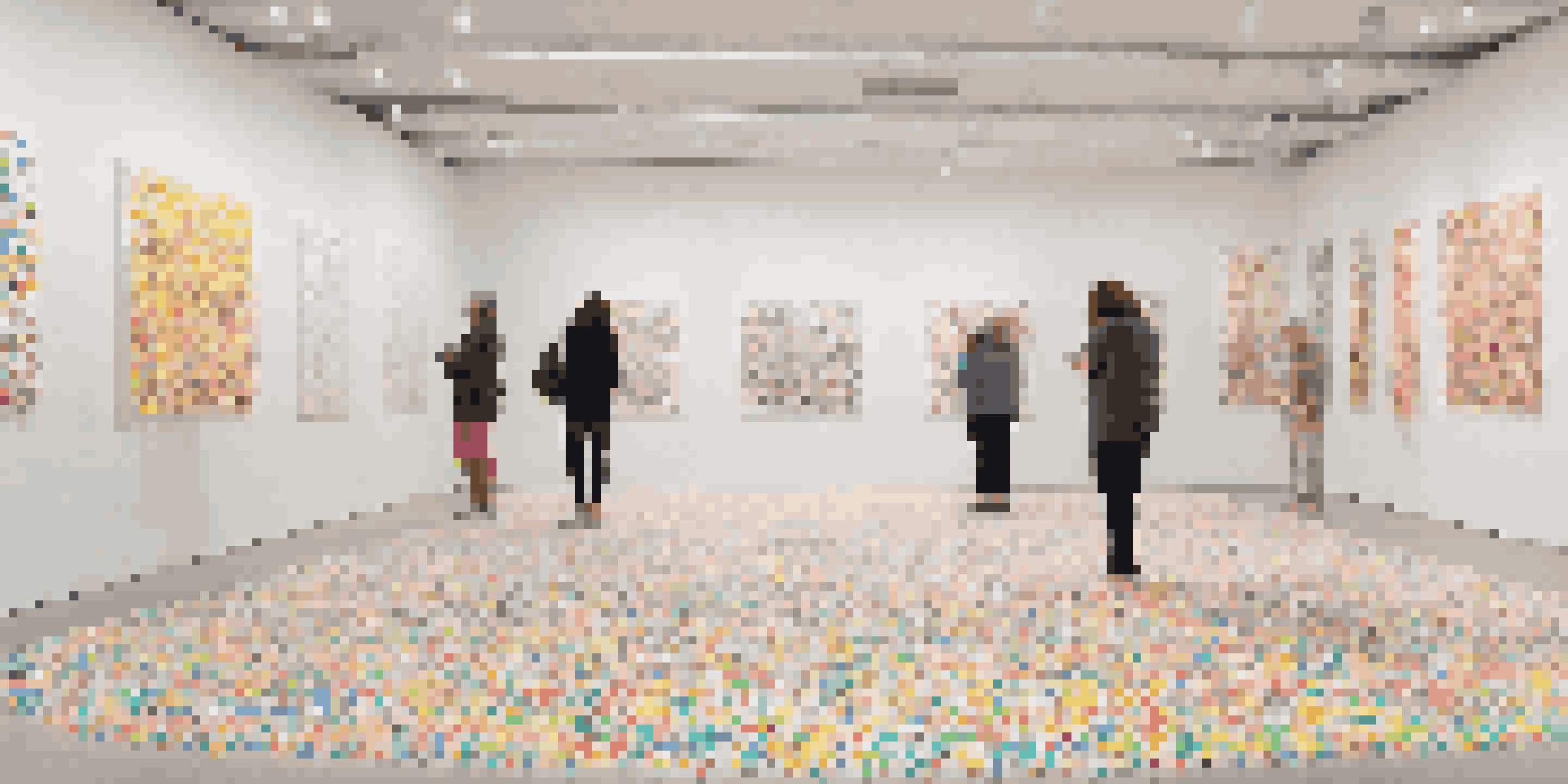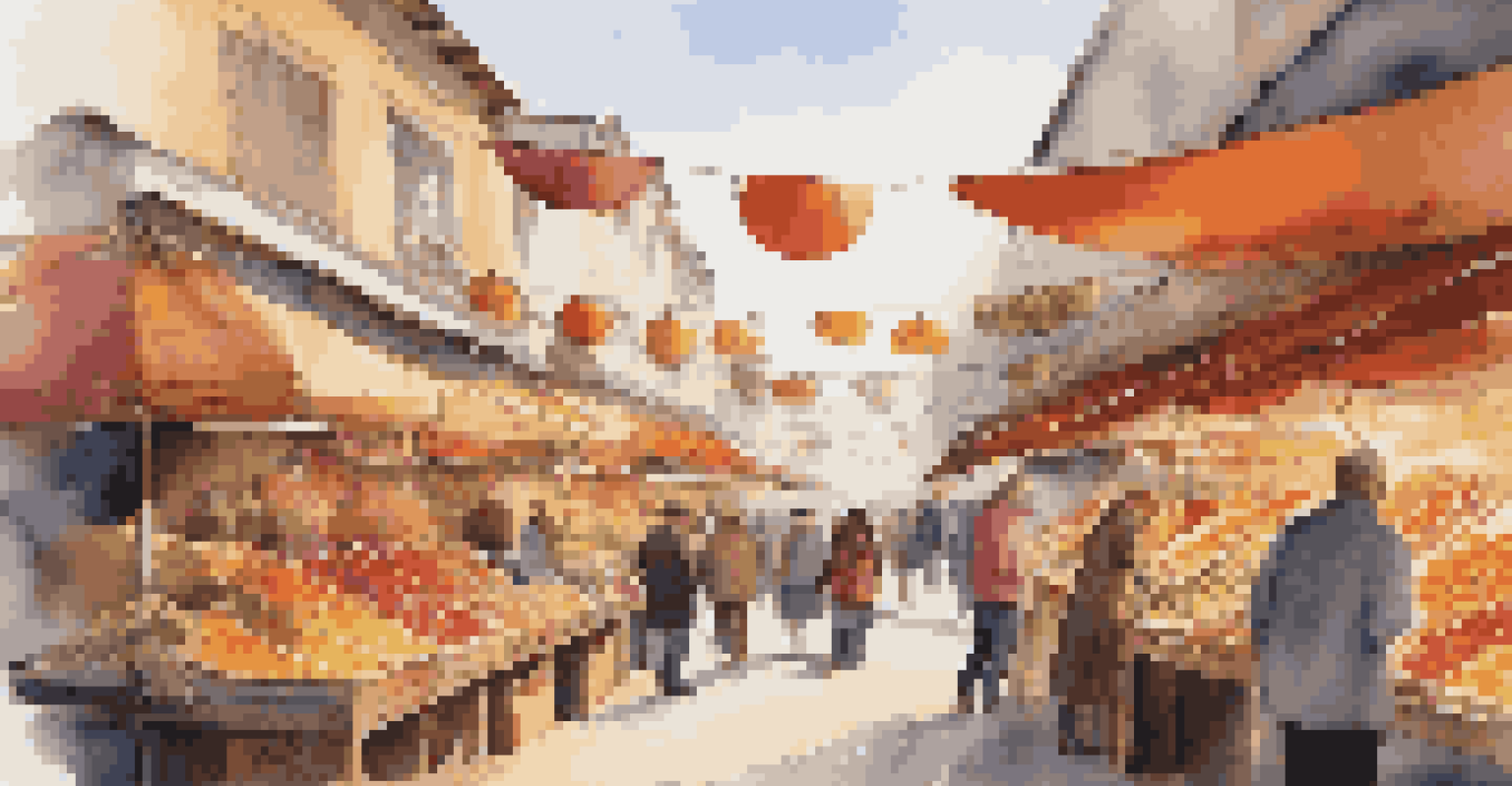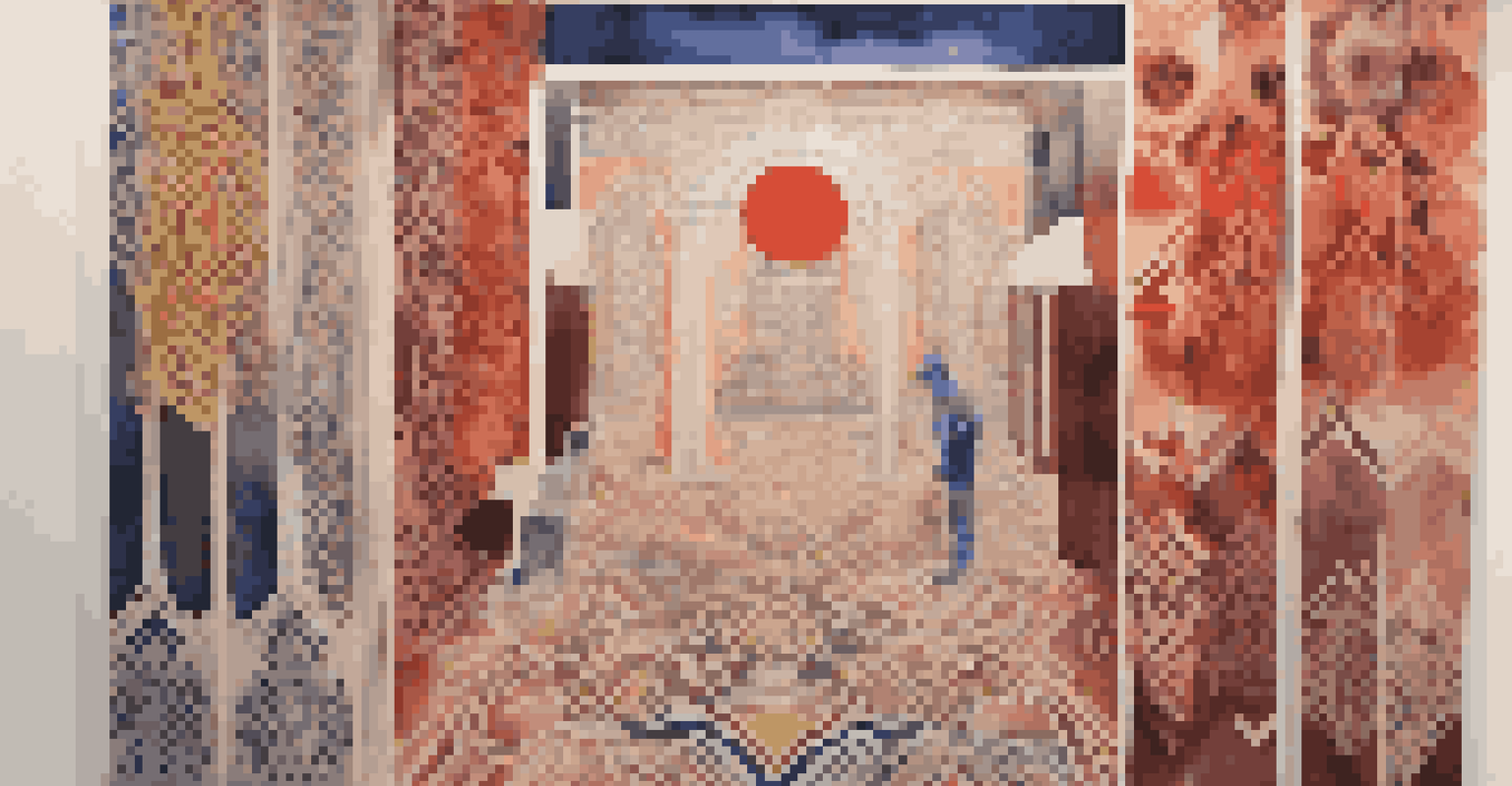Cultural Narratives in Sound and Visual Art Installations

Understanding Cultural Narratives in Art
Cultural narratives in art serve as the stories that reflect the values, beliefs, and traditions of a society. They are not just tales of the past but also commentaries on contemporary issues, encapsulating the essence of human experience. Through sound and visual elements, artists can weave these narratives into immersive installations that engage viewers on multiple levels.
Art is the most beautiful of all lies; it is the truth that reveals itself through the artist's vision.
For instance, a sound installation featuring local folk music can evoke memories and emotions tied to a specific community, while visual elements like traditional motifs can enhance that connection. This interplay creates a rich tapestry that invites viewers to reflect on their own cultural identities. In essence, cultural narratives act as a bridge between the artist's intention and the audience's interpretation.
As we delve deeper into this topic, we will explore various ways sound and visual art installations manifest these narratives, illustrating how they resonate within diverse cultures. By examining specific examples, we can appreciate the profound impact these art forms have on both individuals and communities.
The Role of Sound in Cultural Storytelling
Sound is a powerful medium for storytelling, capable of evoking emotions and memories in ways that visuals alone may not achieve. In cultural art installations, sound can include music, spoken word, or environmental sounds that reflect a community's heritage. For example, an installation that incorporates the sounds of a bustling marketplace can transport viewers, allowing them to experience the vibrancy of that culture.

Moreover, soundscapes can create a sense of place, immersing the audience into the context of the narrative. This sensory engagement not only enhances the artwork but also fosters a deeper understanding of the cultural themes being presented. When listeners encounter familiar sounds, they may connect them to personal memories, enriching their experience of the artwork.
Cultural Narratives in Art
Cultural narratives in art reflect societal values and foster connections between artists and audiences through immersive installations.
As we explore how sound complements visual elements, we will see how this synergy creates a more holistic narrative experience. The combination of auditory and visual stimuli can lead to a profound journey through culture, encouraging audiences to engage with and reflect on their surroundings.
Visual Elements That Reflect Cultural Identity
Visual elements in art installations often serve as a canvas for expressing cultural identity. Artists may use colors, symbols, and imagery that resonate deeply with their heritage, creating a visual language that speaks to the audience. For instance, the use of specific patterns or motifs can represent cultural significance, acting as a visual narrative that tells a story.
The role of art is not to give us what we want, but to give us what we need.
Additionally, the arrangement and presentation of these visuals can influence how viewers interpret the work. An installation that juxtaposes traditional and contemporary visuals can spark discussions about cultural evolution and identity. This dynamic interplay not only highlights the richness of cultural narratives but also invites viewers to consider their own experiences.
By examining various artistic approaches, we can uncover how visual elements become tools for cultural storytelling. These installations not only showcase artistic talent but also serve as platforms for dialogue about identity, heritage, and the passage of time.
Interactivity in Sound and Visual Art Installations
Interactivity is an increasingly important aspect of modern art installations, allowing audiences to engage directly with the artwork. This engagement can take many forms, from touch-sensitive surfaces that trigger sound to interactive projections that respond to viewer movement. Such experiences can transform passive observation into active participation, deepening the connection between the audience and the cultural narratives being presented.
For example, an installation that invites visitors to record their own stories or sounds can create a collage of cultural narratives, making each person's contribution a part of the larger narrative tapestry. This participatory approach not only empowers viewers but also fosters a sense of community and shared experience. It emphasizes that cultural narratives are not static but are continuously shaped by individual and collective voices.
Sound Enhances Storytelling
Sound serves as a powerful medium in art installations, creating emotional connections and enriching cultural storytelling experiences.
As we explore the role of interactivity, we will see how it enhances the storytelling aspect of art installations. By encouraging active involvement, artists can create a more impactful experience that resonates with diverse audiences, reinforcing the relevance of cultural narratives in contemporary society.
Case Studies: Successful Installations
To truly appreciate the impact of cultural narratives in sound and visual art installations, let’s look at successful case studies. One notable example is "The Obliteration Room" by Yayoi Kusama, which invites visitors to cover a white room with colorful dot stickers, transforming it into a vibrant explosion of color. This interactive installation speaks to themes of participation and individuality within a collective experience.
Another powerful instance is "Sounding the City" by various artists, which uses sound recordings from urban environments to explore the relationship between sound and place. By capturing the essence of a city through its sounds, the installation creates a rich narrative that reflects the diverse experiences of its inhabitants. These examples highlight how art can encapsulate and convey cultural narratives effectively.
Through these case studies, we can see the transformative potential of sound and visual art installations. They not only tell stories but also invite audiences to become part of the narrative, enhancing their understanding of cultural contexts and fostering a deeper sense of connection.
Challenges in Conveying Cultural Narratives
While creating sound and visual art installations that convey cultural narratives is rewarding, it also comes with its challenges. One significant issue is the risk of cultural appropriation, where artists may inadvertently misrepresent or exploit cultural symbols without proper understanding or respect. This can lead to backlash from the communities being represented, emphasizing the need for sensitivity and authenticity in artistic expression.
Moreover, the interpretation of cultural narratives can vary widely among audiences. What resonates deeply with one group may not translate in the same way for another. This diversity of perspectives can complicate the artist's intent, making it crucial for artists to engage with communities and understand their narratives fully. Collaboration can be a key solution to addressing these challenges.
Interactivity Engages Audiences
Interactive art installations empower viewers to participate actively, transforming cultural narratives into shared experiences.
As we consider these obstacles, it becomes clear that navigating the complexities of cultural narratives requires thoughtfulness and respect. By fostering open dialogue and collaboration, artists can create installations that honor cultural heritage while inviting diverse interpretations.
The Future of Cultural Narratives in Art
Looking ahead, the future of cultural narratives in sound and visual art installations is bright and full of potential. As technology continues to evolve, artists have access to new tools and mediums that can enhance their storytelling capabilities. Virtual reality (VR) and augmented reality (AR) are emerging as powerful platforms for creating immersive experiences that allow audiences to explore cultural narratives in unprecedented ways.
Additionally, the growing emphasis on inclusivity and representation in the art world is encouraging more diverse voices to share their stories. As artists from various backgrounds gain recognition, we can expect a richer tapestry of cultural narratives to emerge. This shift not only broadens the scope of artistic expression but also fosters a deeper understanding of our shared humanity.

In conclusion, the future promises exciting developments in how cultural narratives are expressed through sound and visual art installations. As artists continue to innovate and collaborate, we can look forward to experiences that not only entertain but also enlighten, connecting us through the stories that define our cultures.